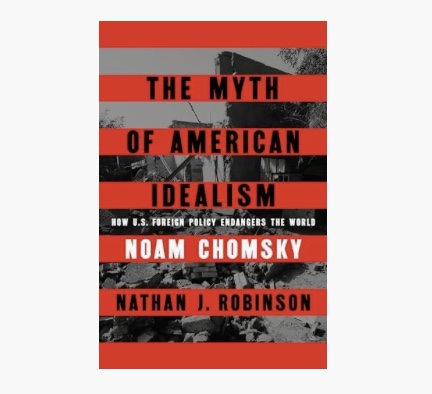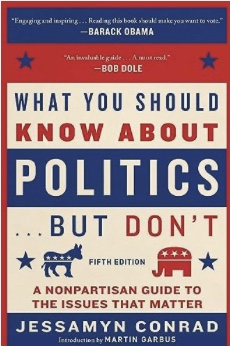The recent Supreme Court ruling mandating the Trump administration to release $2 billion in USAID funds has ignited a firestorm of debate across the political spectrum. This decision, which came down to a narrow 5-4 vote, has been portrayed in vastly different lights depending on the source—some decry it as a theft of taxpayer money for fraudulent programs, while others hail it as a victory for humanitarian aid. But what’s really going on with USAID funding? This article cuts through the media noise, examines the polarized framing, and digs into the publicly available data to reveal where the money is actually going and why it matters.
Media Framing
Media coverage of the USAID funding issue is a textbook example of ideological spin, with outlets and personalities tailoring their narratives to resonate with their audiences.
Tim Pool: Conservative commentator Tim Pool, in a recent podcast, framed the Supreme Court’s decision as a travesty, claiming it forces taxpayers to fund “fraudulent programs.” He singled out gender studies as an example of misuse and used suggestive phrasing like “some of it probably is criminally fraudulent” without providing evidence. Pool praised Justices Alito and Thomas for dissenting, while criticizing Chief Justice Roberts and Justice Barrett for siding with the liberal bloc. Yet, his commentary conspicuously lacks specifics about USAID’s actual expenditures, relying instead on vague accusations and moral equivalence arguments to rally his right-leaning audience. This approach—hinting at wrongdoing while avoiding concrete claims—allows him to pander to his base while maintaining deniability.
Wonkette: Entertaining Outrage from the Left: On the opposite end, the left-leaning Wonkette published an article titled “Supreme Court Will Make King Trump Pay USAID Bills For Now, And Alito Is Mad.” Written by Marcie Jones in a biting, humorous tone, it accuses the Trump administration of causing “immediate deaths” and stranding workers by freezing funds. It mocks opponents of the ruling as “Elon Musk’s incel clown posse” and emphasizes the humanitarian toll, such as a four-year-old’s death in Uganda and spoiled food aid. While entertaining to its audience, the piece leans heavily on emotional appeals and exaggerated language, offering little in the way of detailed financial breakdowns to support its claims.

The Myth of American Idealism: How U.S. Foreign Policy Endangers the World
Right-Leaning Perspective: Swamp Creatures and Fiscal Betrayal A right-leaning article, “Supreme Court Issues Ruling on Trump’s Order Against USAID Funding,” paints a picture of “Washington’s swamp creatures” funneling billions overseas with “virtually zero accountability.” It frames the Supreme Court’s decision as a “shocking betrayal of fiscal responsibility” and highlights Justice Alito’s dissent, which questioned whether a single district judge should have the power to compel $2 billion in payments. Like Pool, it leans on buzzwords—“gravy train,” “slush funds”—and anti-establishment sentiment, but offers no comprehensive look at USAID’s spending to substantiate its outrage. These contrasting narratives reveal a common thread: each prioritizes audience appeal over factual depth, cherry-picking details to fit a preconceived storyline. [Missing link – can see on video at 17:00 here]
Fact-Checking – Where USAID Funding Really Goes
To move beyond the spin, let’s turn to the data. The website ForeignAssistance.gov provides a transparent breakdown of USAID’s disbursements. For fiscal year 2023, USAID allocated funds across 160 countries and regions, with disbursements totaling billions across various sectors. Here are some concrete examples:
- Macroeconomic Support for Ukraine: $1.4 billion to bolster Ukraine’s government amid its war with Russia, a strategic investment in a U.S. ally.
- Global Health Initiatives: $811 million to the Global Fund to Fight AIDS, TB, and Malaria, supporting health programs in over 140 countries.
- Emergency Food Assistance: $395 million for Ukraine, alongside similar efforts in Afghanistan and Somalia, addressing immediate humanitarian needs.
These figures are not secrets buried in bureaucratic red tape—they’re accessible to anyone with an internet connection. The claim that taxpayers have “no idea” where the money goes is demonstrably false (USAID Semiannual reports to congress). USAID’s funding (USAID Strategic Report 2022-2026) supports critical areas like emergency response, global health security, and government stability, often with tangible benefits: aiding the less fortunate, fostering goodwill, and preventing costlier crises (e.g., pandemics) down the line. You can even report waste, fraud and abuse here.

What You Should Know About Politics . . . But Don’t, Fifth Edition: A Nonpartisan Guide to the Issues That Matter
The White House List: Cherry-Picking for the Base – A Trump administration press release titled “At USAID, Waste and Abuse Runs Deep” listed 12 examples, including $1.5 million for DEI in Serbia, $70,000 for a DEI musical in Ireland, and $2 million for “sex changes and LGBT activism” in Guatemala. These projects, while controversial to some, often aim to promote social cohesion and reduce hate crimes—outcomes with long-term societal benefits. Notably, the list avoids mentioning the billions spent on health, food aid, or disaster relief, focusing instead on hot-button issues like transgender rights and DEI to energize the administration’s conservative base.
Why It Matters: Beyond the Headlines – The USAID funding debate underscores a critical lesson: media framing (good description by University of Edinburgh here) can obscure reality. Tim Pool’s vague insinuations, Wonkette’s snarky outrage, and the right’s anti-swamp rhetoric all serve their audiences but sidestep the full picture. The data shows USAID funds a mix of humanitarian, health, and strategic projects—some of which, yes, involve progressive causes that spark debate. But the notion of rampant, unaccountable waste is a myth easily debunked by a quick visit to ForeignAssistance.gov.
So why does this matter? Because foreign aid isn’t just charity—it’s an investment. Supporting Ukraine keeps a geopolitical foe in check. Fighting global diseases saves lives and prevents pandemics that could cost trillions. Promoting social acceptance abroad can reduce conflict and build allies. These aren’t abstract “slush funds”; they’re calculated moves with returns that benefit both recipients and the U.S.
A Call for Clarity: In an era of polarized media, the USAID controversy is a reminder to dig deeper. Don’t settle for suggestive soundbites or entertaining rants—check the facts yourself. The Supreme Court’s ruling isn’t about “King Trump” or “swamp creatures”; it’s about paying for work already done, as mandated by law. USAID’s budget, while imperfect and open to critique, isn’t a black hole of fraud—it’s a tool with measurable impacts. Next time you hear a pundit rail against “waste” or laud a “victory,” take 30 seconds to look up the numbers. The truth isn’t hidden; it’s just waiting for someone to care enough to find it.
Follow us! 🌐 ToSpeakOnline.com | 📺 YouTube Channel | 🎙️ Spotify Podcast | ✉️ Newsletters | TikTok | Instagram | Twitter/X | Facebook | LinkedIn | Partners & Associations





